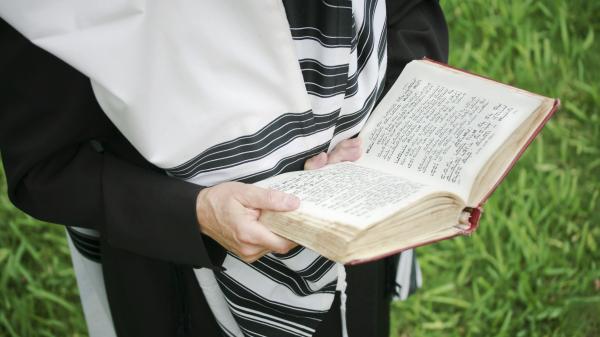The Jewish Leap Year
A leap year in the Jewish calendar has 13 months and occurs 7 times in a 19-year cycle. In Hebrew, a leap year is referred to as Shanah Me'uberet, or pregnant year.

A Jewish man praying with a tallis.
©iStockphoto.com/Tova Teitelbaum
Catching Up with the Solar Year
Months in the Jewish calendar are based on the phases of the Moon. A new month begins on the day of the Crescent Moon after the New Moon phase.
Because the sum of 12 lunar months is about 11 days shorter than the solar year, a 13th month is periodically added to keep the calendar in step with the astronomical seasons.
Read more about the Jewish calendar
Adar – The Lucky Month
In a Jewish leap year, an extra month is added after the month of Shevat and before the month of Adar. It is called Adar Aleph, Adar Rishon, or Adar I. The month of Adar is then referred to as Adar Bet, Adar Sheni, or Adar II.
According to Jewish tradition, Adar is a lucky and happy month.
Leap Year Rules
A leap year occurs 7 times in the 19-year Metonic cycle, namely, in years 3, 6, 8, 11, 14, 17, and 19 of the cycle. This means that a leap month is added every 2 to 3 years.
The Metonic cycle, also known as Enneadecaeteris, is a period that comes very close to being a common multiple of the solar year and the lunar month (synodic month). With a deviation of just a few hours, 19 solar years have very nearly the same length as 235 lunar months, both periods amounting to 6940 days.
This makes it possible for Jewish time reckoning to approximately stay in sync with the solar year simply by adding a certain amount of full months per Metonic cycle. Since 19 years with 12 months accumulate to 228 months, 7 extra months must be added to arrive at a total of 235 months per cycle.
By employing this system, the Jewish calendar deviates from the solar year by 1 day in 216 years.
How accurate are the other calendar systems?
Deficient, Regular, and Complete Leap Years
To prevent certain Jewish holidays like Rosh Hashana from falling on specific days of the week, a day may be added to the 8th month (Marcheshvan) or subtracted from the 9th month (Kislev). This means that a year in the Jewish calendar can have 6 different lengths:
- Common years can be 353, 354, or 355 days long.
- Leap years can be 383, 384, or 385 days long.
The year lengths are referred to as cheserah or deficient year (353/383 days), kesidrah or regular year (354/384 days), and shlemah or complete year (355/385 days).